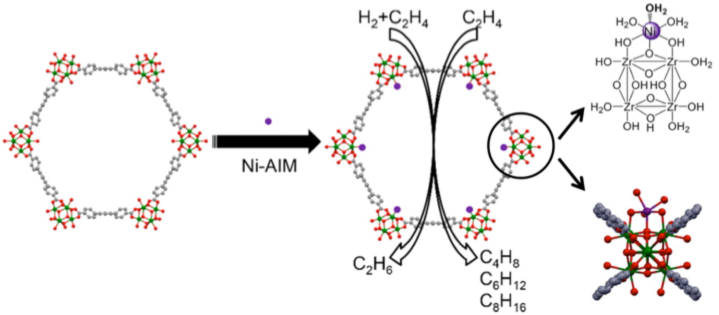

Main navigation | Main content
02/17/2016
Recent research from the research group of Professor
by Laura Fernandez, Ph.D.
A prima ballerina is not expected to dance the entirety of Tchaikovsky’s Swan Lake with out the rest of the company or the orchestra: why should a nickel catalyst or a single scientist be any different?
This performance is brought to you by the Inorganometallic Catalyst Design Center (ICDC), which is comprised of a team of chemists and chemical engineers from all over the US. Within the ICDC all members work together toward the common goal of discovering a new class of energy-science-relevant catalytic materials and understanding the underlying structure-function relationships that will lead to further catalyst discovery. ICDC is comprised of researchers from eight different institutions, where University of Minnesota is the Lead Institution with three theoretical groups and three experimental groups based in the Department of Chemistry.
Recently, the groups of Professors Christopher J. Cramer and Laura Gagliardi elucidated the mechanism of a single-site nickel catalyst synthesis and the catalytic activity thereof. The catalyst, the prima ballerina, was formed by Atomic Layer Deposition of Ni(II) in Metal−Organic Framework (MOF) NU-1000, which generates a single site catalyst using the MOF as a platform to avoid competitive deactivation processes. The single nickel centers have been shown to be catalytically active upon C-H and C-C bond activation with a turnover frequency of 0.90 ± 0.25 s-1, comparable to that of the commercial platinum-supported catalyst reported in the literature. With such a promising performance from the nickel catalyst we look forward to more such results in the future.
As in a ballet the production would not have been possible without the individuals that made it happen. The key performers of the computational study were Aaron B. League (graduate student) and Varinia Bernales (post-doctoral associate) from the Cramer and Gagliardi groups, respectively. The catalysis and characterization was orchestrated with their collaborators, Professors Omar K. Farha and Joseph T. Hupp from Northwestern University and Professor Johannes A. Lercher from Pacific Northwest National Laboratory, and was recently published in the Journal of the American Chemical Society.
Read about this research at http://pubs.acs.org/doi/abs/10.1021/jacs.5b12515.
Figure: Structural representation of NU-1000, highlighting its organic linker, mesoporous channel, and Zr6-containing node and a schematic depiction of the process used to anchor Ni to the Zr6 node of NU-1000 via AIM. Color code: Zr (green), O (red), C (gray), H (white), Ni (purple).
The work was supported in part by the U.S. Department of Energy, Office of Basic Energy Sciences, Division of Chemical Sciences under award DE-SC0012702 (Inorganometallic Catalyst Design Center
